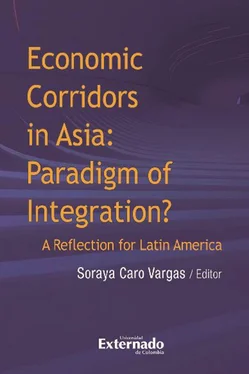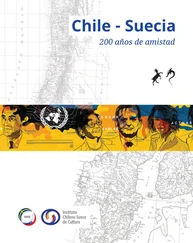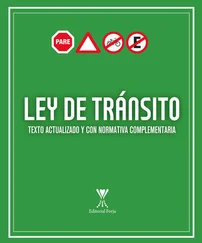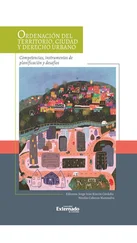“Relevance”, according to the Dictionary of the Royal Academy of the Spanish Language, is the quality of being convenient, appropriate or amenable to something. Analysing from different geographic and epistemological perspectives the offer that China extends to Latin America in 2018 in order to integrate us naturally to BRI according to its discourse, is a need that besides being relevant is appropriate. It is the right moment to ponder the emotional reactions of our leaders to this tempting offer, a consequence of the tedium and precaution of an international economic system and leaders who for decades have been indifferent to the social and economic consequences of their actions, and also on the tremendous gap our continent suffers in terms of infrastructure.
The novelty of this publication is due to the origin of the authors who are located at different segments of the Eurasian route and participants and actors in Latin America involved in recent and current debates on the relevance, efficacy and appropriateness of the megaprojects and their effects. From this approach to the problem, one can also infer the following: the corridors and their influence on the population and the land, the corridors and their relation with the foreign policy of nations, the corridors and their impact on regional stability and national security, BRI and the new dynamics of South-South Cooperation, BRI and the definition of active policies, in short an integral analysis of the phenomenon, the think tanks, critical discourse and its responsibility in the implementation of the initiative.
The research has a unifying thread: the local, in situ, interpretation of BRI and its relation to the concept of economic corridors. The aim is to serve as a proposed reference point for academia and decision makers in Latin America who have to fully discern the new functional geography, of a new physical reality, which will overcome national borders and traditional diplomacy through special connecting zones, nodes of competitive production and cities which, in some cases, work independent of domestic legislation, resulting in what Keller Easterling (2013), 5calls extra diplomacy in his global conferences, and others like Khanna (2014) term as mega globalization. The authors present special cases. The Turkish people and their famous construction firms do not feel the same way about the BRI initiative as do the Indians, the emulous of China in the region or the central Asian people who need roads in order to reach Europe. The subjects discussed at the Association of South East Asian Nations (ASEAN) on the implications of BRI are not the same as those discussed inside the African Economic Community. Latin America should seek its own integral answers to how it can connect to BRI or to other forms of global connectivity, with what objectives and megaprojects and in which places. Which are the places and regulatory frameworks and financial institutions for the realization of our interests, needs and territorial development?
5. GLOBALIZING PRECURSORS AND THE RESURGENCE OF THE ECONOMIC CORRIDOR AS A TERM AND CONSEQUENCE OF BRI
The last stage of globalization and its moorings to the end of the Cold War has been a general, systematic and irrepressible trend. The main trigger was the elimination of trade barriers, so as to reduce transaction costs within and across borders. The transformation of the means of production, interdependence and the internationalization of the production chains has led to heretofore unseen improvements in the collective welfare of the Asian giants, for example, the prices of goods and services became much more accessible, the consumption patterns changed, inflationary trends were controlled, knowledge flows became rapid and efficient while innovation widened the welfare spectrum (John, 2019).
The trade and financial dynamics were tied to the institutions created in the framework of the international economic system dominated by the powers of that time –the United States and the rich countries of Europe- who were expanding their markets. This multilateralism might have brought a certain stability, but the system tended to defend the interests of developed countries and systematically undervalued the concerns of other members over the yawning gap between the rich and poor and the concentration of the economic power in a few players. In the 1980’s, the West observed how China transformed economically and was determined to become the greatest provider of goods and services on a global scale. The Western powers decided to strategically promote the progressive linkages of this country to the system especially through the World Trade Organization. China wanted this platform for its products to get access to markets, while the United States needed to interact in order to control the intentions of its new rival. China and the United States deepened their commercial, diplomatic and cultural ties, the Americans and Europeans began to relocate their businesses such as engineering and advanced manufacture and innovation hubs to China, the hypothesis being that the internal development of China would lead to a new relationship between their establishment and global partners. China wanted to copy, in order to write its own script and the West waved the banner of free trade, without calculating the boomerang effect of this stale capitalist formula. The positive result was the distributive convergence, thanks to which hundreds of millions of Chinese and Indians would soon rise above the poverty line and this transfer of wealth has made Asia the great player of our times. The multipolar balance improved.
China became a giant, it took advantage of the agreements signed and through its full or partial entry in regional groups it had access to the markets, to vanguard knowledge and benefited from huge foreign investment thus educated its human capital. Diversification and manufacturing technology were given prime importance and there was strong investment in its commercial and urban infrastructure. China never fully accepted the requisites of Western institutions, even as it underlined the legitimacy of the “Chinese Model”. It even berated the international economic system on its unipolarity and inefficiency and proposed new instruments of inter and transregional cooperation to developing countries, based on the principles of the welfare of all, non-interference in internal matters, respect for sovereignty and large scale flexible cooperation.
The idea of joining China with Europe to soft finance infrastructure megaprojects which would fill the physical connectivity and digital gaps was the result of a series of internal development policies which prioritized the development of productive forces, the strengthening of the Chinese frontier with the West, the development of far flung regions, social stability and the control of religious extremism, besides ensuring vistas for the expansion of Chinese financial and business corporations. 6 One Belt One Road (OBOR), or the Border and Road Initiative (BRI), makes public and formalizes China’s advance over the Eurasian landscape, its geostrategic relocation in the South China Sea and Indian Ocean. The reclamation of the Silk Route, apart from giving a new narrative to Asia as a continent that is slowly recovering its central position, awakens a hope of more equitable financing alternatives in countries that have serious connectivity gaps. Many Asian and African economies have their own version of this history and remember the induced indebtedness which characterized earlier hegemonies.
BRI forces us to examine the category of development or economic corridors amply described in this book by the researchers Jerónimo Delgado and Pankaj K Jha, in Chapters 2and 4. Corridors are spatial development strategies that coordinate competitive connectivity efforts in different fields. They bring the strategic points of production, logistics and supply closer to urban centres where there is a secure demand. Megaprojects result in corridors with diverse objectives: transport corridors, storage and logistical corridors, corridors for energy security and maritime and communication corridors amongst others. They link the special economic zones (ZEE) that have proliferated in the world as scenarios of relocation of production with new urban centres, intelligent cities, maritime infrastructure networks, railways and aerospace nets, while new financial flows are privileged. Plurilateralism, territorial development, normative flexibility and hyperglobalisation will take on the world (Khanna, 2017, p. 62).
Читать дальше












